
The Museum of the Baltic Sea Countries is an information museum located in the open air in free access, in the center of the village of Yantarny, Kaliningrad region.
The project was initiated by the international non-profit organization Coalition Clean Baltic and implemented by the Kaliningrad non-profit organization Art-Gate.
The museum consists of sculptures located on the ground near the alleys in the Moritz Becker Park: the central alley, the coastal alley and the middle alley.
The sculptures, with the help of mythical creatures or heroes of national fairy tales, show the value of the Baltic Sea, which has provided the inhabitants of coastal territories with the most important resources since ancient times, and tell about the environmental problems that Russia, Poland, Lithuania, Latvia, Denmark, Finland, Sweden, Estonia and Germany are facing right now.
The museum was created to attract the attention of guests and residents of the Kaliningrad region to the environmental problems of the Baltic Sea.
As part of the program, 9 sculptures with an information description and an info stand (located near the 5-star Schloss Hotel) were installed in Becker Park, which contains a description of the museum, a guide map of the museum and the locations of the sculptures are indicated.
Sculptures of the Baltic Sea Stan Museum:
- bird of Paradise Alkonost (Russia), which tells about the problem of changes in the ecosystem due Baltic sea alien sea creatures, which penetrate into the sea in two ways: attach to the hull or hiding in its ballast tanks, or slowly but surely make our way through the artificial gravity with and between the Black, Caspian and Baltic seas;
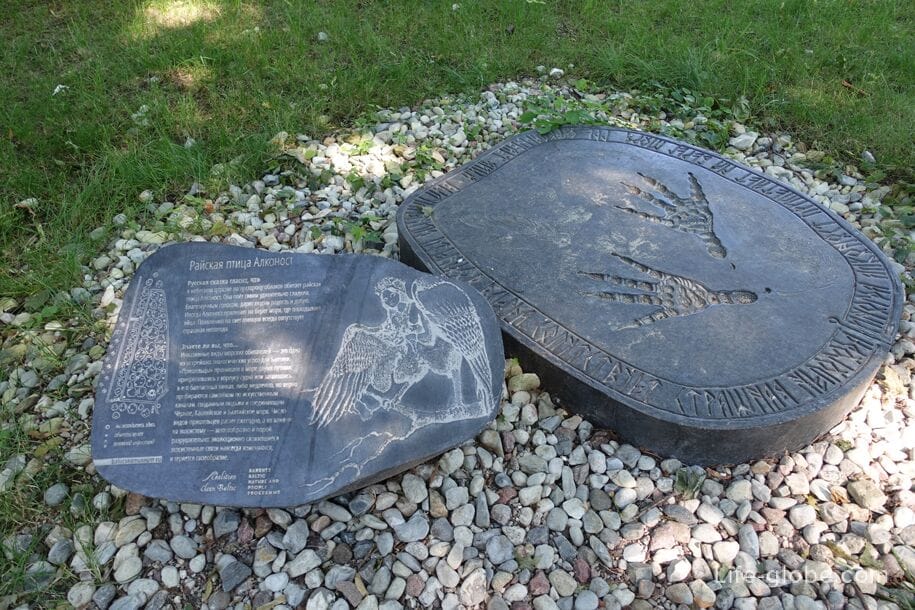

- naughty Flounder (Poland), reminiscent of excessive industrial and amateur fishing, as a result of which the populations of some fish species are extremely small and are declining every year, and some have disappeared altogether;
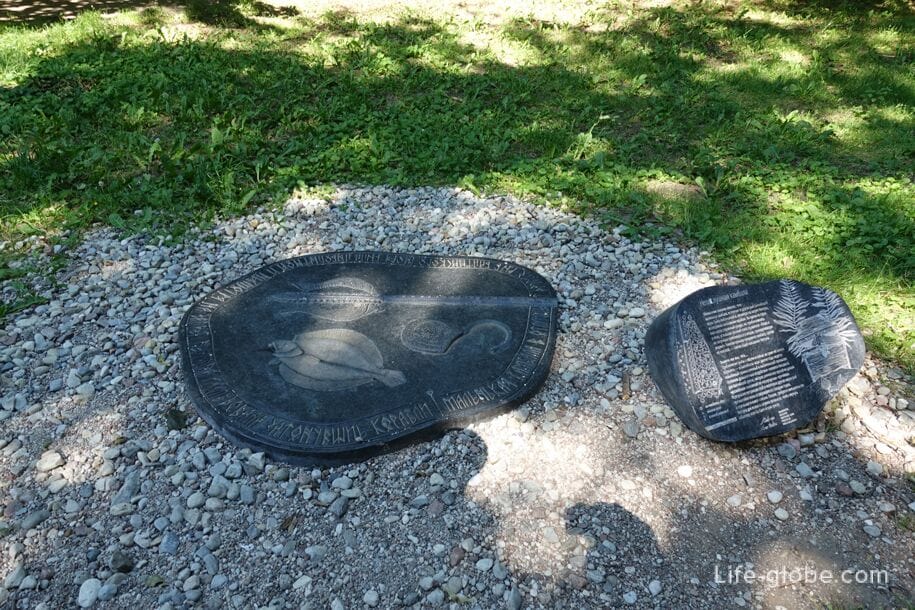
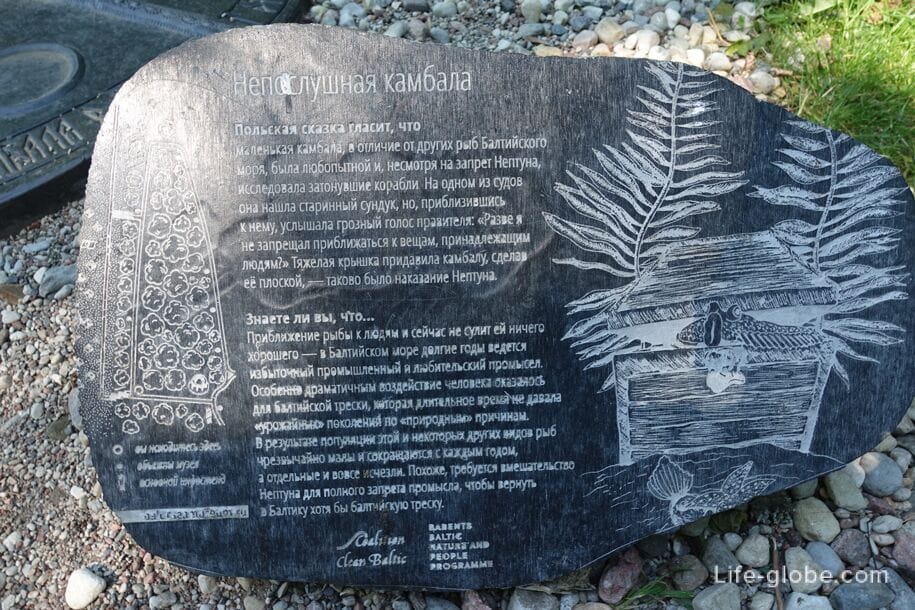
- the ship's spirit of Klabauterman (Germany), which protects ships from accidents and collisions and tells that the simultaneous presence of a large number of ships at sea poses great risks to the ecosystem: unauthorized spills occur, accidental pollution with oil and other chemicals;
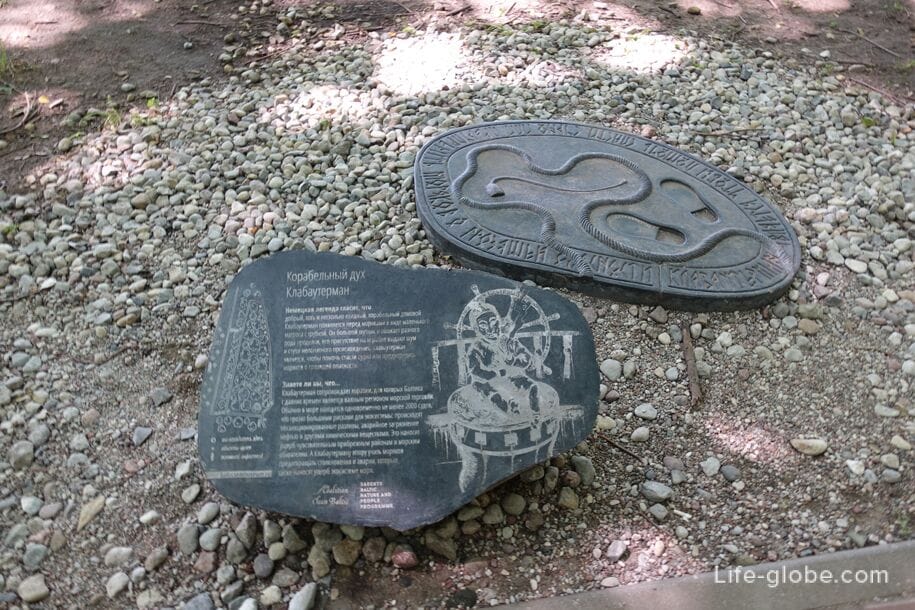

- the little mermaid (Denmark), representing the problem of accumulation of dangerous substances in the depths of the sea, which lead to toxic consequences for both marine inhabitants and humans;
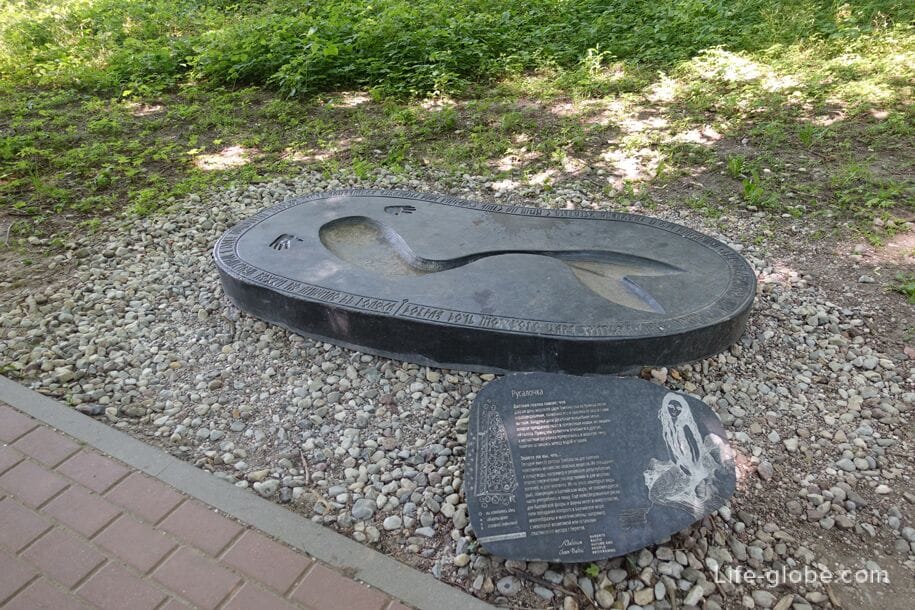
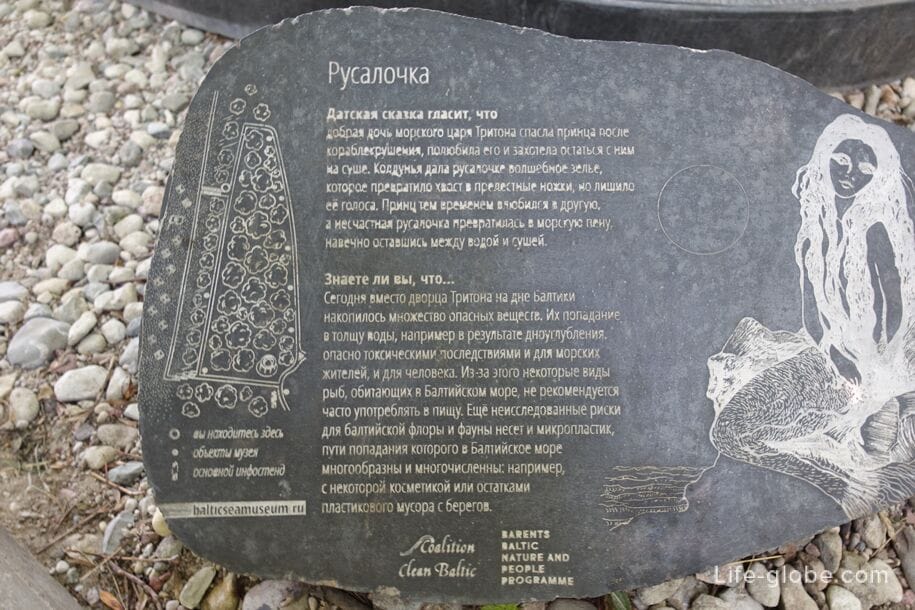
- the water spirit of Nekken (Sweden), telling about the problem of stopping spawning migrations in rivers flowing into the sea.
Numerous cascades, dams, dams and other hydraulic structures often no longer have economic significance, but they still destroy the centuries-old system of reproduction of salmon fish, lampreys, eel, syrti (fish), herring-feints. Some of these species are listed in the Red Book or are considered endangered;
- God Ahti (Finland) - the problem of the death of seals in the Baltic Sea.
Pinnipeds in the Baltic are dying more and more often: from diseases caused by pollution of the sea; due to the disappearance of breeding grounds; fishing. Attracted by the accumulation of fish, seals get entangled in nets and suffocate, or break out, but get deep cuts and die from wounds;
- apothecary and his student (Estonia), reminding about the problem of dumping pharmaceuticals into the sea, because of which animal behavior is disrupted, drug-resistant bacteria develop, and even there are violations of the reproduction process in marine life.
The same problems can be experienced by people whose medicines enter the body with water and fish;
- Blue cow (Latvia), associated with the problem of nitrogen and phosphorus runoff from fields into the sea, after which their excessive concentration leads to a rapid growth of microscopic algae and oxygen consumption for the decomposition of dead cells, which turns the bottom of the Baltic Sea into a desert;
- giantess Neringa (Lithuania), helping to protect the Baltic Sea from flooding and destruction.
Due to global climate change, the melting of glaciers is accelerating, storms are intensifying, and the water level in the world's oceans is rising. There are many coastal cities and towns under the threat of flooding, including in the Kaliningrad region. Another consequence of global warming is the introduction of heat-loving aliens into the Baltic Sea, occupying an increasing place in the ecosystem day by day and displacing marine life, whose true home is the Baltic - thereby the latter are dying out.
The stand of the Museum of the Baltic Sea countries with a description and layout of the objects

The layout of the objects of the Museum of the Baltic Sea Countries in the Becker Park
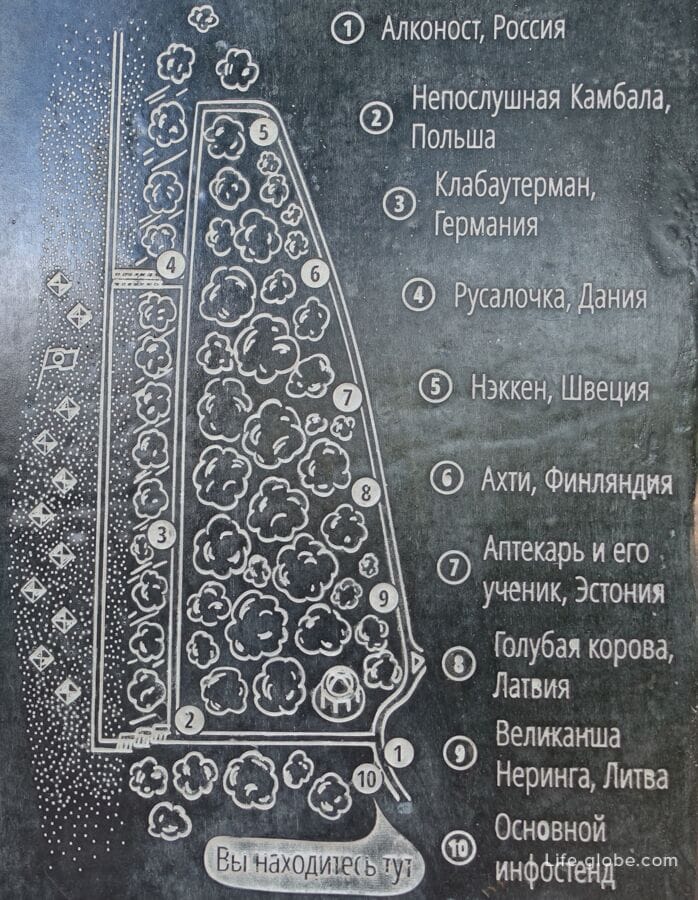
Website of the Baltic Sea Museum: balticseamuseum.
All accommodation facilities in Yantarny (hotels, apartments, guest houses, etc.), including near beaches, in the center of the village and more remotely from those, can be viewed and booked here